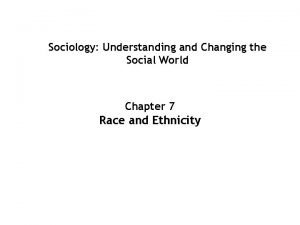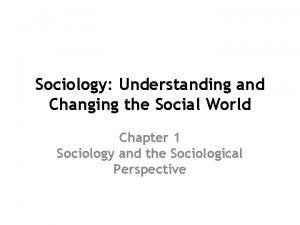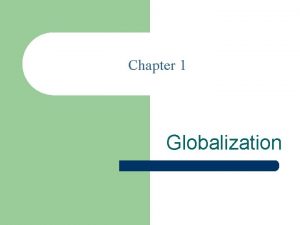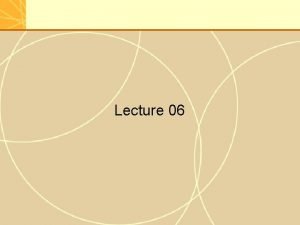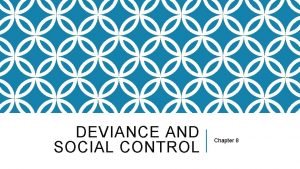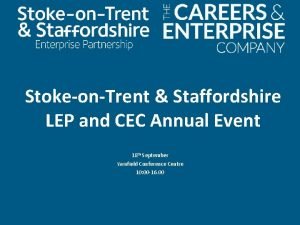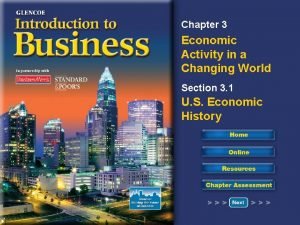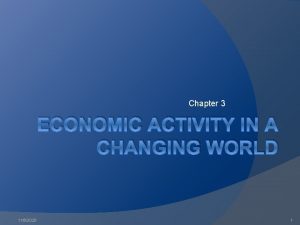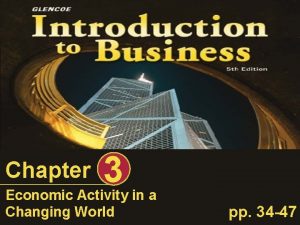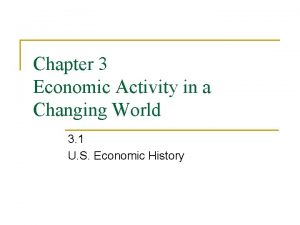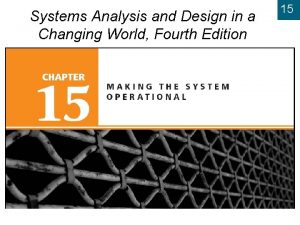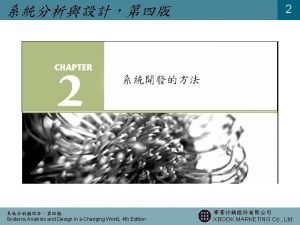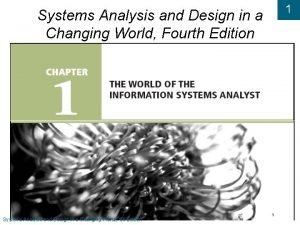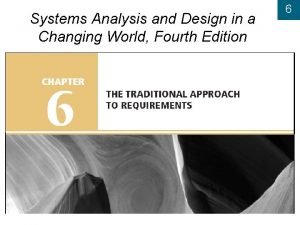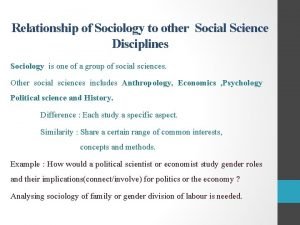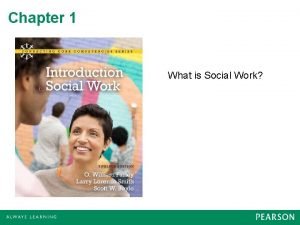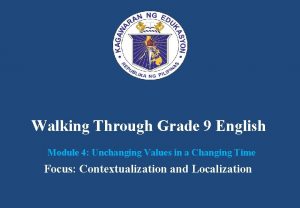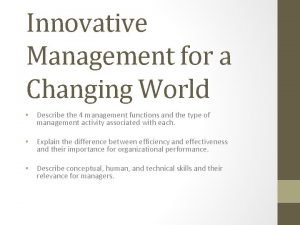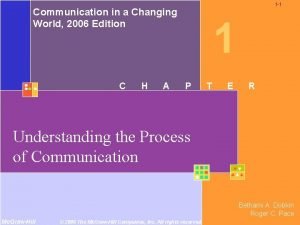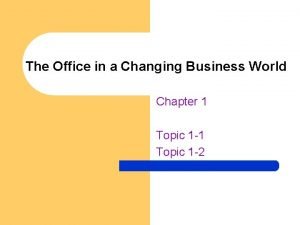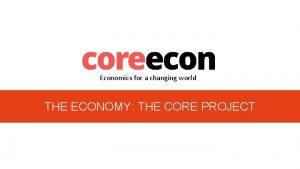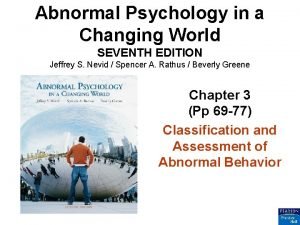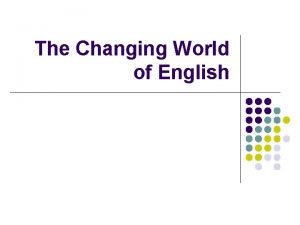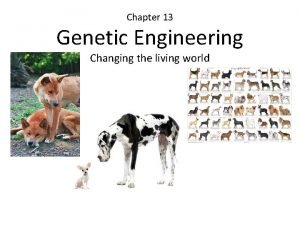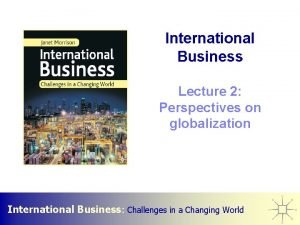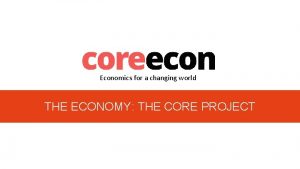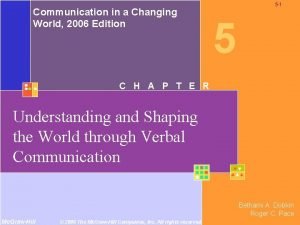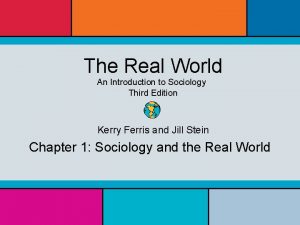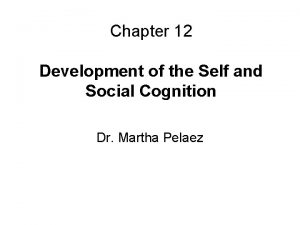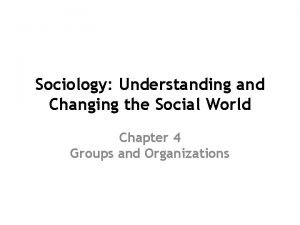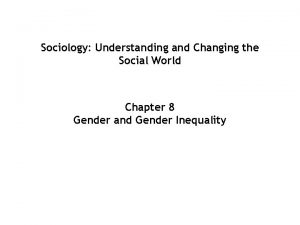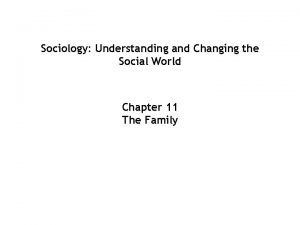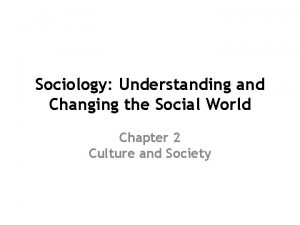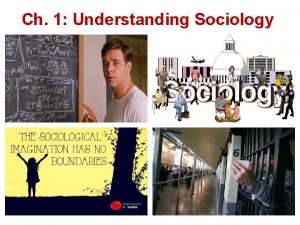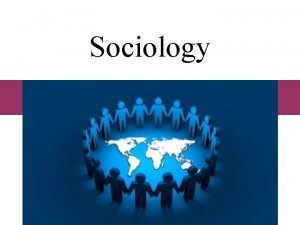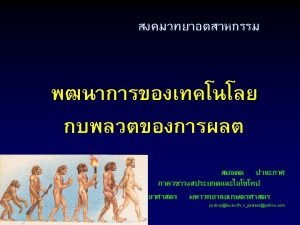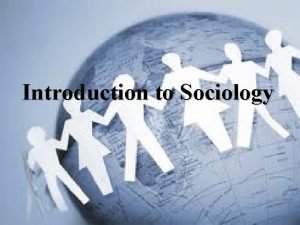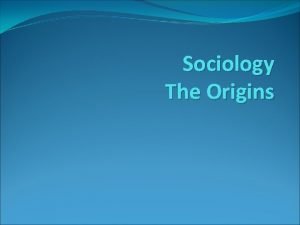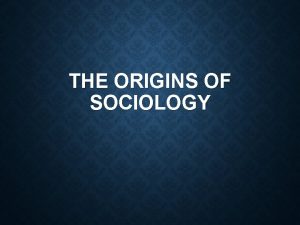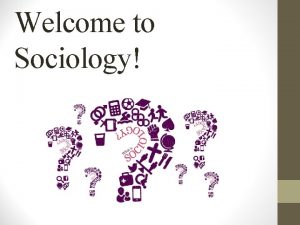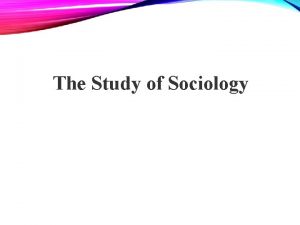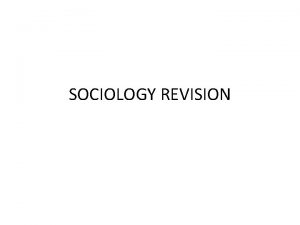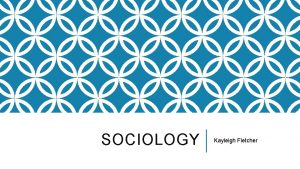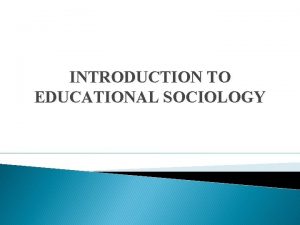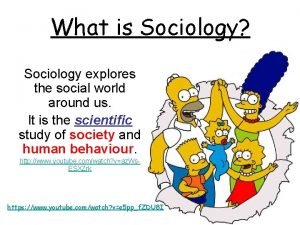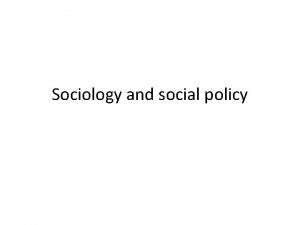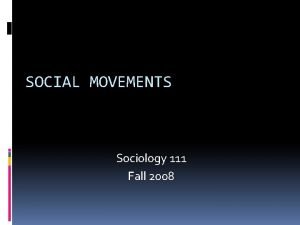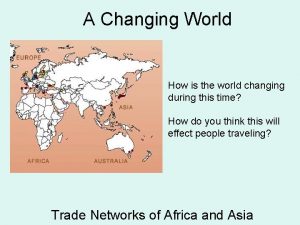Sociology Understanding and Changing the Social World Chapter




































- Slides: 36

Sociology: Understanding and Changing the Social World Chapter 12 Education and Religion 12 -1

Learning Objectives • Summarize the key developments in the history of education from 1900 s • List the major functions of education • Explain the problems that conflict theory sees in education • Describe how symbolic interactionism understands education • Summarize social class, gender, and racial and ethnic differences in educational attainment • Describe the impact that education has on income • Discuss how education affects social and moral attitudes 12 -2

Learning Objectives • Describe how schooling in the United States helps perpetuate social inequality • Explain the difference between de jure segregation and de facto segregation • Summarize the evidence on the effectiveness of single-sex education • Describe the extent of school violence and the controversy over zero-tolerance policies • Describe key developments in the history of religion since ancient times 12 -3

Learning Objectives • List the major religions in the world today • Summarize the major functions of religion • Explain the views of religion held by the conflict and symbolic interactionist perspectives • Understand the differences among the major types of religious organizations • Describe the extent and correlates of religious affiliation 12 -4

Learning Objectives • Explain the different dimensions of religiosity • Summarize the evidence on the nature and extent of secularization • Discuss trends in regard to religious conservatism in the United States • Describe the relationship between religiosity and deviant behavior 12 -5

Education • It is the social institution through which a society teaches its members the skills, knowledge, norms, and values they need to learn to become good, productive members of their society • It can be both formal and informal 12 -6

A Brief History of Education in the United States • Two themes emerge from the brief history: – Until very recently, formal schooling was restricted to wealthy males – Although the rise of free, compulsory education was an important development, the reasons for this development trouble some critics • It began in part to prevent immigrants’ values from corrupting “American” values; its origins smack of ethnocentrism • It served the interests of the upper/capitalist class much more than it served the interests of workers 12 -7

Table 12. 1 - Theory Snapshot 12 -8

Figure 12. 1 - The Functions of Education 12 -9

Figure 12. 3 - Race, Ethnicity, and High School Dropout Rate, 16– 24 Year-Olds, 2007 12 -10

Figure 12. 4 - Family Income and Percentage of High School Graduates Who Attend College Immediately After Graduation, 2007 12 -11

Figure 12. 5 - Race, Ethnicity, and Percentage of Persons 25 or Older With a 4 Year College Degree, 2008 12 -12

Figure 12. 6 - Percentage of All Bachelor’s Degrees Received by Women, 1960– 2007 12 -13

The Difference Education Makes: Income and Attitudes • Credential society: A society in which higher education is seen as evidence of the attainment of the needed knowledge and skills for various kinds of jobs • In a credential society, people with more educational attainment achieve higher incomes • Education: – Leads us to be more tolerant of nontraditional beliefs and behaviors – Leads us to be less likely to hold various kinds of prejudices – Reduces racial prejudice and sexism 12 -14

Figure 12. 7 - Percentage of Population 25 or Older With at Least a High School Degree, 1910– 2008 12 -15

Figure 12. 9 - Educational Attainment and Mean Annual Earnings, 2007 12 -16

Figure 12. 10 - Education and Agreement That “It Is Much Better for Everyone Involved if the Man Is the Achiever Outside the Home and the Woman Takes Care of the Home and Family” 12 -17

Schools and Inequality • Schools differ greatly in their funding, their conditions, and other aspects • Noted author and education critic Jonathan Kozol refers to these differences as “savage inequalities” • From his observations, Kozol concluded that the United States is shortchanging its children in poor rural and urban areas 12 -18

School Segregation • De jure segregation: School segregation stemming from legal requirements – Laws dictated which schools white children and African American children attended – In 1954, the U. S. Supreme Court outlawed de jure school segregation • De facto segregation: School segregation stemming from neighborhood residential patterns – Many children continue to go to schools that are segregated because of neighborhood residential pattern – Kozol calls this situation as “apartheid schooling” 12 -19

School Vouchers and School Choice • In a school choice program, the government gives parents certificates, or vouchers, that they can use as tuition at private or parochial (religious) schools • Advocates of school choice programs say they give poor parents an option for high-quality education they otherwise would not be able to afford • Critics of school choice programs say they hurt the public schools by decreasing their enrollments and funding 12 -20

Single-Sex Schools and Classes • The argument for single-sex learning for girls/boys rests on the following reason: – Girls/Boys can achieve much more in a single-sex class/college than in a coed institution • Preliminary evidence indicates that singlesex education may be beneficial for several reasons, but more evidence on this issue is needed 12 -21

School Violence • School violence has declined during the past decade • Statistically speaking, schools are very safe • Less than 1% of homicides involving school-age children take place in or near school • To reduce school violence, many school districts have zero-tolerance policies involving weapons – These policies call for automatic suspension or expulsion of a student who has anything resembling a weapon for any reason 12 -22

Religion • It is the set of beliefs and practices regarding sacred things that help a society understand the meaning and purpose of life • Sacred: Aspects of life that are supernatural and awe-inspiring • Profane: Aspects of life that are practical and down-to-earth 12 -23

A Brief History of Religion • Prehistoric people turned to religion to help them understand birth, death, and natural events • Many societies in ancient times like Egypt, Greece, and Rome, were polytheistic • During the Middle Ages, the Catholic Church dominated European life • The Church’s control began to weaken with the Protestant Reformation in 1517 12 -24

Major Religions • The world’s largest religion is Christianity – More than 2 billion people (approx) • The second largest religion is Islam – 1. 6 billion people (approx) • The third largest religion is Hinduism – More than 800 million people 12 -25 (approx)

Major Religions • Buddhism – 400 million people (approx) • Judaism – More than 13 million people • Confucianism – 5 – 6 million people 12 -26 (approx)

Table 12. 2 - Theory Snapshot 12 -27

Types of Religious Organizations • Church: A large, bureaucratically organized religious organization that’s closely integrated into the larger society • Ecclesia: A large, bureaucratically organized religious organization that is a formal part of the state and has most or all of a state’s citizens as its members • Denomination: A large, bureaucratically organized religious organization that is closely integrated into the larger society but is not a formal part of the state 12 -28

Types of Religious Organizations • Megachurch – A church at which more than 2, 000 people worship every weekend on the average • Sect: A relatively small religious organization that is not closely integrated within the larger society and that often conflicts with at least some of its norms and values • Cult: A small religious organization that is at great odds with the norms and values of the larger society 12 -29

Figure 12. 16 - Religious Preference in the United States 12 -30

Correlates of Religious Affiliation • Religious affiliation is related to demographic variables, race, ethnicity, and age – Liberal Protestants tend to live in the Northeast and to be well educated and relatively wealthy – African Americans are overwhelmingly Protestant, usually Conservative Protestants (Baptists), while Latinos are primarily Catholic – Older people are more likely than younger people to belong to a church or synagogue 12 -31

Religiosity • It is the significance of religion in a person’s life • Dimensions: – – – 12 -32 Experiential religiosity Ritualistic religiosity Ideological religiosity Intellectual religiosity Consequential religiosity

Secularization • It is the weakening importance of religion in a society • Religion has declined in importance since the 1960 s but remains a potent force in American society • Membership in mainstream Protestant denominations has declined since the 1960 s, but membership in conservative denominations has risen • Most people still believe in God and more than half of all Americans pray daily 12 -33

The Rise of Religious Conservatism • Religious conservatism: The belief that a return to the teachings of the Bible and religious spirituality is necessary to combat the corrupting influences of modern life • At present approximately one-third of Americans state a religious preference for a conservative denomination • The increasing influence of the “new religious right” is closely related to the rise of religious conservatism 12 -34

Religiosity and Deviant Behavior • Holding other factors constant, more religious adolescents are less likely than other adolescents to: – – Drink and take drugs Commit various kinds of delinquency Have sex during early adolescence or at all Have sex frequently if they do start having sex • There is much less research on whether this relationship continues to hold true during adulthood 12 -35

Religiosity, Physical Health, and Psychological Well-Being • Various measures of religious involvement are positively associated with better physical and mental health – Religious attendance increases social ties that provide emotional and practical support – Personal religious belief can provide spiritual comfort in times of trouble – Religious involvement promotes healthy lifestyle 12 -36
 Sociology understanding and changing the social world
Sociology understanding and changing the social world Debunking motif definition
Debunking motif definition The changing world output and world trade picture
The changing world output and world trade picture The changing world output and world trade picture
The changing world output and world trade picture Deviants chapter 8
Deviants chapter 8 Changing our understanding
Changing our understanding Chapter 3 economic activity in a changing world
Chapter 3 economic activity in a changing world Chapter 3 economic activity in a changing world
Chapter 3 economic activity in a changing world Chapter 3 economic activity in a changing world
Chapter 3 economic activity in a changing world Chapter 3 economic activity in a changing world
Chapter 3 economic activity in a changing world System analysis and design
System analysis and design Systems analysis and design in a changing world
Systems analysis and design in a changing world Systems analysis and design in a changing world
Systems analysis and design in a changing world System analysis and design in a changing world
System analysis and design in a changing world Systems analysis and design in a changing world
Systems analysis and design in a changing world Systems analysis and design in a changing world
Systems analysis and design in a changing world Systems analysis and design in a changing world
Systems analysis and design in a changing world Systems analysis and design in a changing world
Systems analysis and design in a changing world Systems analysis and design in a changing world
Systems analysis and design in a changing world Sociology and social science
Sociology and social science Distinguishing characteristics of social work
Distinguishing characteristics of social work World changing glasgow
World changing glasgow Grade 9 english module
Grade 9 english module Innovative management for a changing world
Innovative management for a changing world Communication in a changing world
Communication in a changing world The office in a changing business world
The office in a changing business world The economy: economics for a changing world
The economy: economics for a changing world Abnormal psychology in a changing world
Abnormal psychology in a changing world Abnormal psychology in a changing world
Abnormal psychology in a changing world The changing world of english
The changing world of english Section 13-1 changing the living world
Section 13-1 changing the living world International business challenges in a changing world
International business challenges in a changing world The economy: economics for a changing world
The economy: economics for a changing world Communication in a changing world
Communication in a changing world Ap world history chapter 25 africa and the atlantic world
Ap world history chapter 25 africa and the atlantic world The real world an introduction to sociology
The real world an introduction to sociology Development of self and social understanding
Development of self and social understanding
